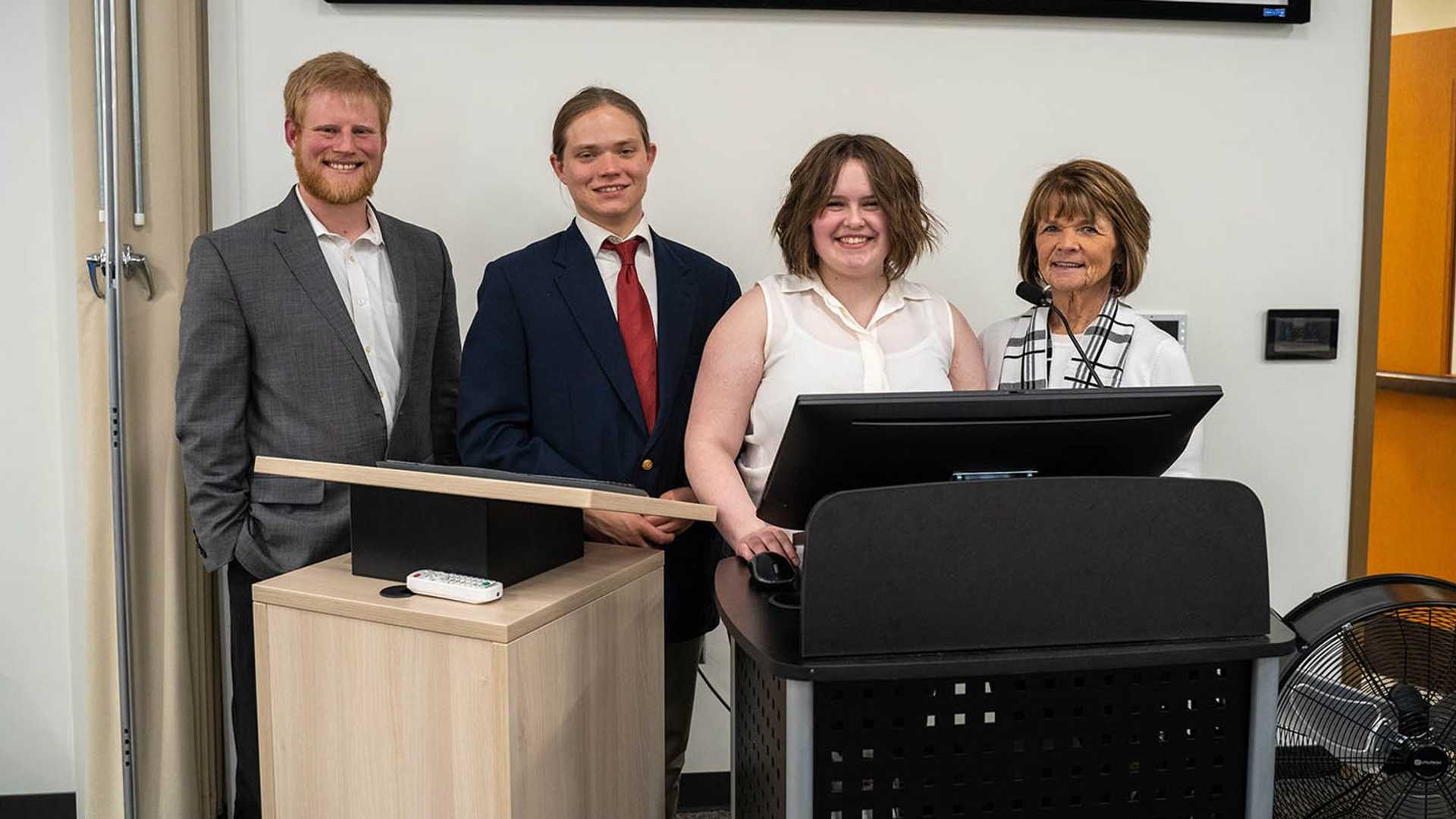ChatGPT and the Future of Writing Instruction - Bluefield University
Chatbots have been used by students across the nation to complete writing assignments. However, school boards, K-12 teachers, and university professors have banned the use of known chatbots like OpenAI's ChatGPT in classrooms. But, educators at Bluefield University believe that English courses can be structured in a way that chatbots can be incorporated into the classroom to enhance instruction and ensure the focus remains on student outcomes.
Bluefield University hosted an academic forum entitled "ChatGPT and the Future of Writing Instruction" on March 29 at the Science Center Lyceum on campus. The presentation featured research and focused dialogue from Assistant Professor of English Dr. Josh Pittman, Adjunct Professor of English Gail Webb, and students Abigail Bradley and Cameron Justis.
Bradley opened the presentations sharing the results of an anonymous student survey taken by on-campus students on the application and development of chatbots with an emphasis on their significance in educational settings. Of those surveyed, 43 percent of students had not previously heard of chatbots, and 9 percent had heard of chatbots, but not ChatGPT. Forty-eight percent were willing to incorporate artificial intelligence in the learning process while 43 percent were unsure, and nine percent were opposed to the idea.
Discussing future outcomes that could arise from the development of the technology, one student wrote, "If a self-sustaining AI program can speak conversationally, handle complicated ideas, give reputable answers, pass exams, and never be tired, teachers start to look really expensive."
Justis then summarized existing research on artificial intelligence and education before sharing the interview he conducted with Tim Robinette, BU's Director of Technology Services. Robinette likened chatbots to academic resources like dictionaries, encyclopedias, or calculators. "There is still knowledge that has to be applied for the use of it, and I think it just is another tool, like the calculator, that we can utilize in different fields to get information," he said.
Dr. Pittman followed with a discussion of the guiding principles for sound writing instruction developed by the Conference on College Composition and Communication (CCCC). Dr. Pittman emphasized the writing process as opposed to the product by creating deadlines for theses, outlines, and drafts discourage students from outsourcing their work. Additionally, completing in-class activities on paper such as free writing, collaborative writing, summarizing, and peer editing minimizes opportunities to have a chatbot complete an assignment.
To conclude the forum, Webb demonstrated how ChatGPT can aid with generating ideas for a writing assignment or formatting a paper. "Students can use it to give them an outline of how to write a certain paper and also to explain APA terminology and how a paper is set up in APA," she said.
However, Webb's presentation also exposed ChatGPT's limitations. When the chatbot was asked for peer-reviewed articles to help with a research paper, it provided broken links and irrelevant sources.
"If students are required to go through the entire writing process from brainstorming to editing, they simply do not have the chance to circumvent the learning. If there is only a final due date for the final draft, then the likelihood is high that students are going to procrastinate and be tempted to use AI to write the entire essay before it is due," Dr. Pittman explained.
The forum concluded with the realization that if AI is used properly, it will become an asset to education. If educators emphasize the process of writing and completing assignments, decrease pressure for academic success, and lower the emphasis on a final grade, then students will see less of a need to resort to something such as AI to do their work for them.




















